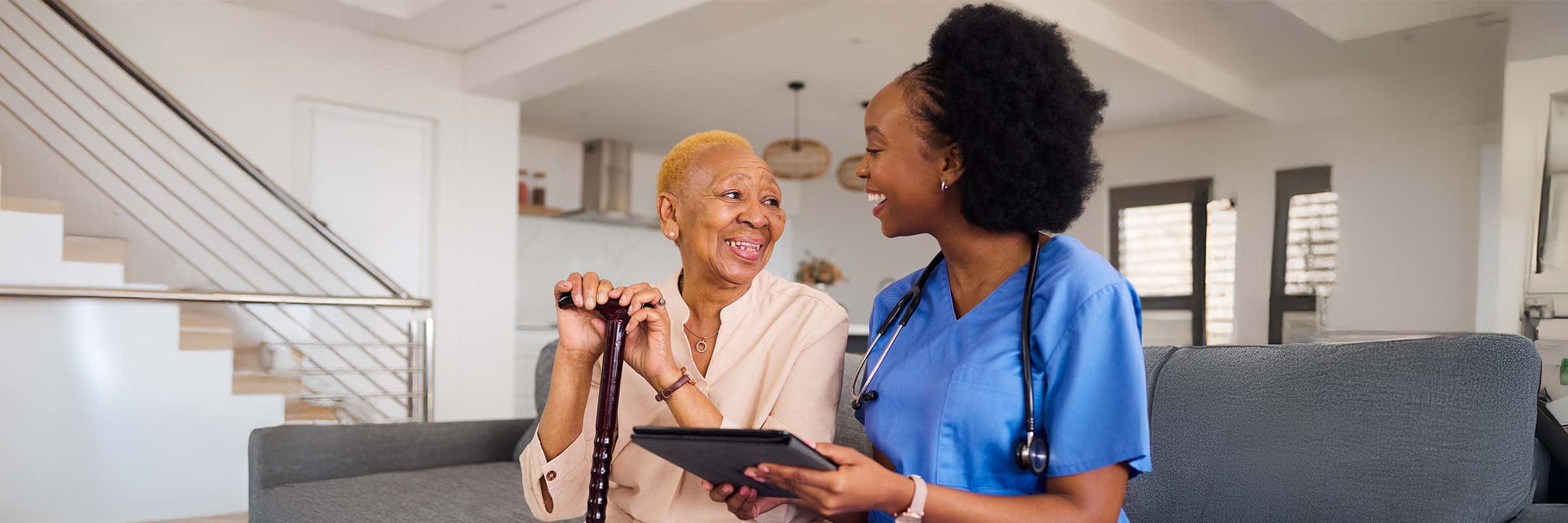Keeping remote workers safer with automated monitoring

“Employees know that when they use SafetyLine, there’s always someone there to check on them if they should need it.”
Carl Thomas, Regional Provincial Workplace Safety Manager,
NL Health Services
Carl Thomas’s team is responsible for the safety of the people who provide essential healthcare to the 500,000 people living in Newfoundland and Labrador. Many of those people live in small towns or remote areas around the province. As a result, NL Health Services employees must often travel long distances and do much of their work far from central healthcare facilities – often in areas with limited or unreliable cellular reception.
These employees can face a range of safety hazards that include workplace violence, biological hazards, slips and falls, and car accidents. When working alone or travelling between work sites, the risk and severity of these hazards are increased.
To keep employees safe, NL Health Services turned to its long-term communications partner Bell for a solution that would enable managers and supervisors to check in on workers out in the field and send help if needed. Bell deployed SafetyLine, its lone worker safety solution, as an add-on feature to NL Health Services’ existing mobility services, providing an automated check-in system for every off-site employee. We spoke to Carl Thomas, a regional provincial workplace safety manager for NL Health Services, about how SafetyLine has helped maintain the safety of its employees.-
What sparked your decision to start using SafetyLine from Bell to help protect NL Health Services workers?-
“When using the previous check-in or check-out process, there was a possibility of human error. For example, if an employee didn't check in during the specific timeframe and the monitor didn't know the employee was working alone, then no one was checking in on them to ensure they were safe.-Having the ability to adjust and customize check-in times for different operations was another added benefit.”-
Has SafetyLine benefited your operations in any way? If so, how has it affected operations? ---
“The satellite system helps employees when they travel to areas without cell reception. The system is very quick and easy to use with just a press of a button. When used correctly, SafetyLine can literally be a lifesaver.-It’s helped supervisors and managers ensure the safety of their employees who are working alone without the need to monitor the clock for check-in and check-out times.”-
In addition to operations, how has SafetyLine specifically benefitted your employees and lone workers?
“When employees use SafetyLine, and they haven't checked in within a certain timeframe, the monitor automatically gets a notification and can follow up quickly.-The employees feel safer knowing that someone is there to monitor their movements and, if required, take intervening actions to ensure their safety.”-
Giving employees confidence that someone is watching out for them
SafetyLine gives NL Health Services and its employees greater peace of mind, knowing that someone is monitoring workers’ safety and can send help in an emergency.-
“Employees know that when they use-SafetyLine, their location is tracked, and there’s always someone there to check on them if they should need it,” Thomas explains. “Staff members can also leave recorded messages to share anything they deem important for their whereabouts.”-
These details and context provide an accurate overall picture of each lone worker’s situation to the safety monitor, making it easier to follow up with them if necessary. Today, more than 1,324 NL Health Services workers who work in Health and Community Services use the SafetyLine solution, with positive feedback from remote workers and monitors alike.